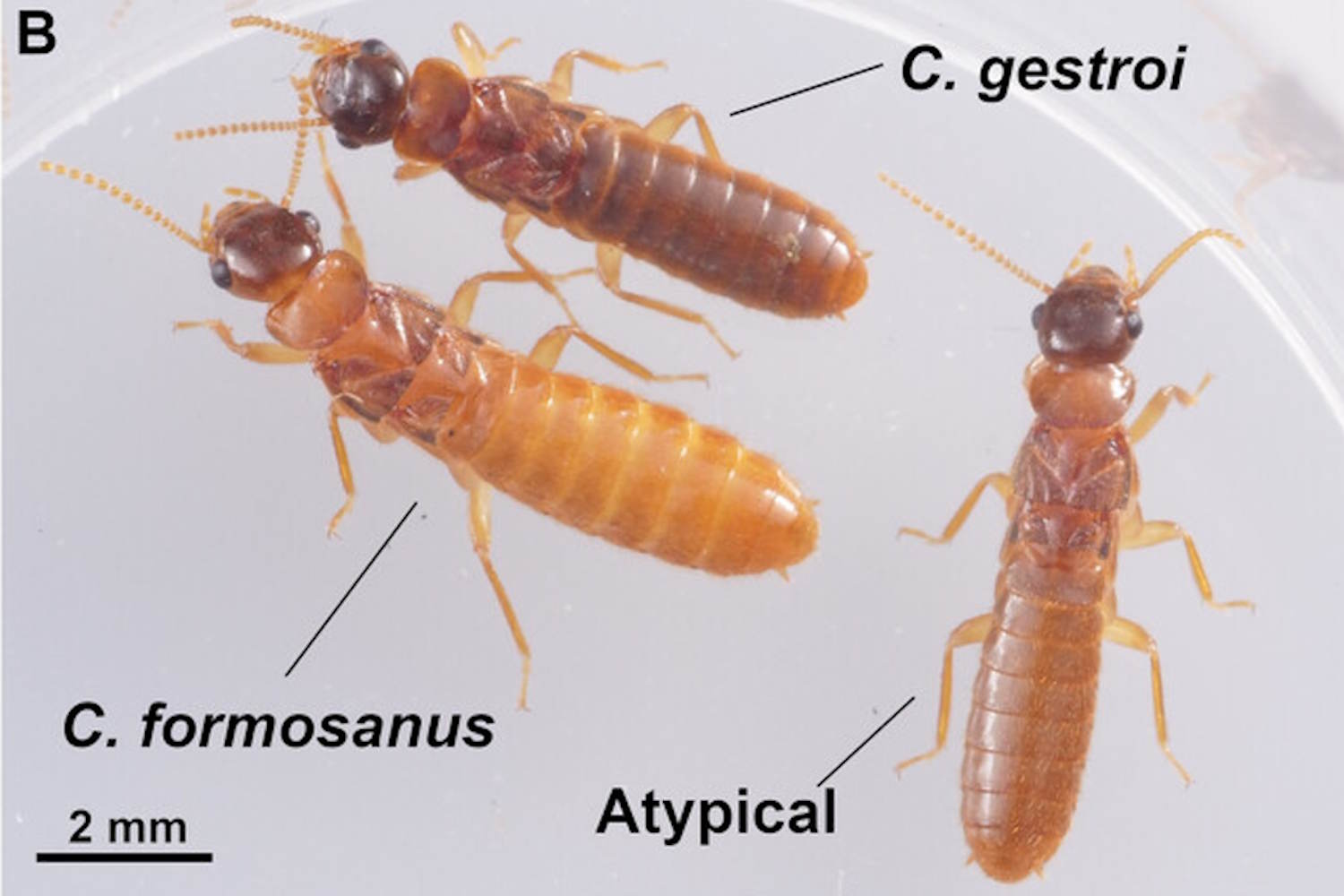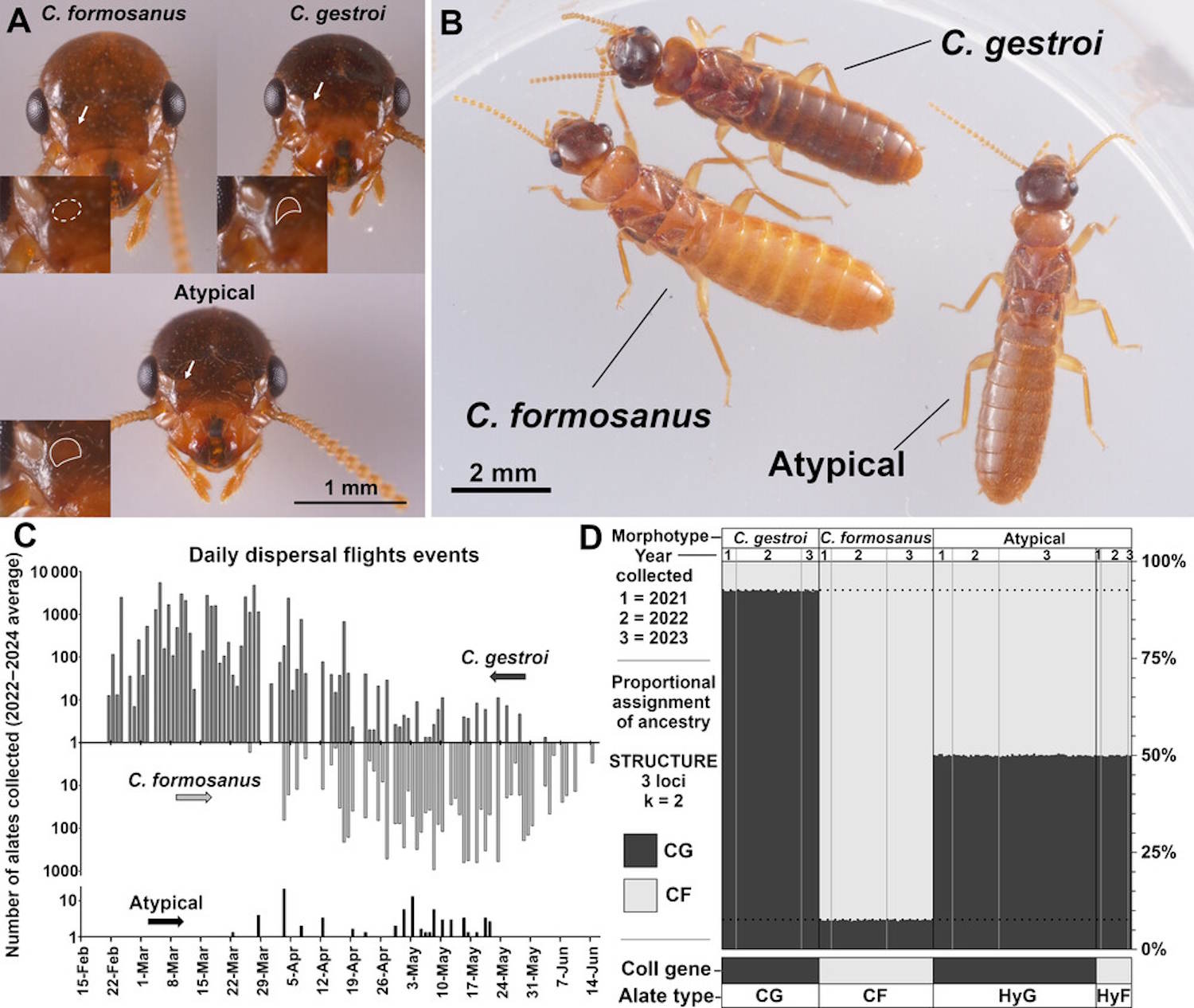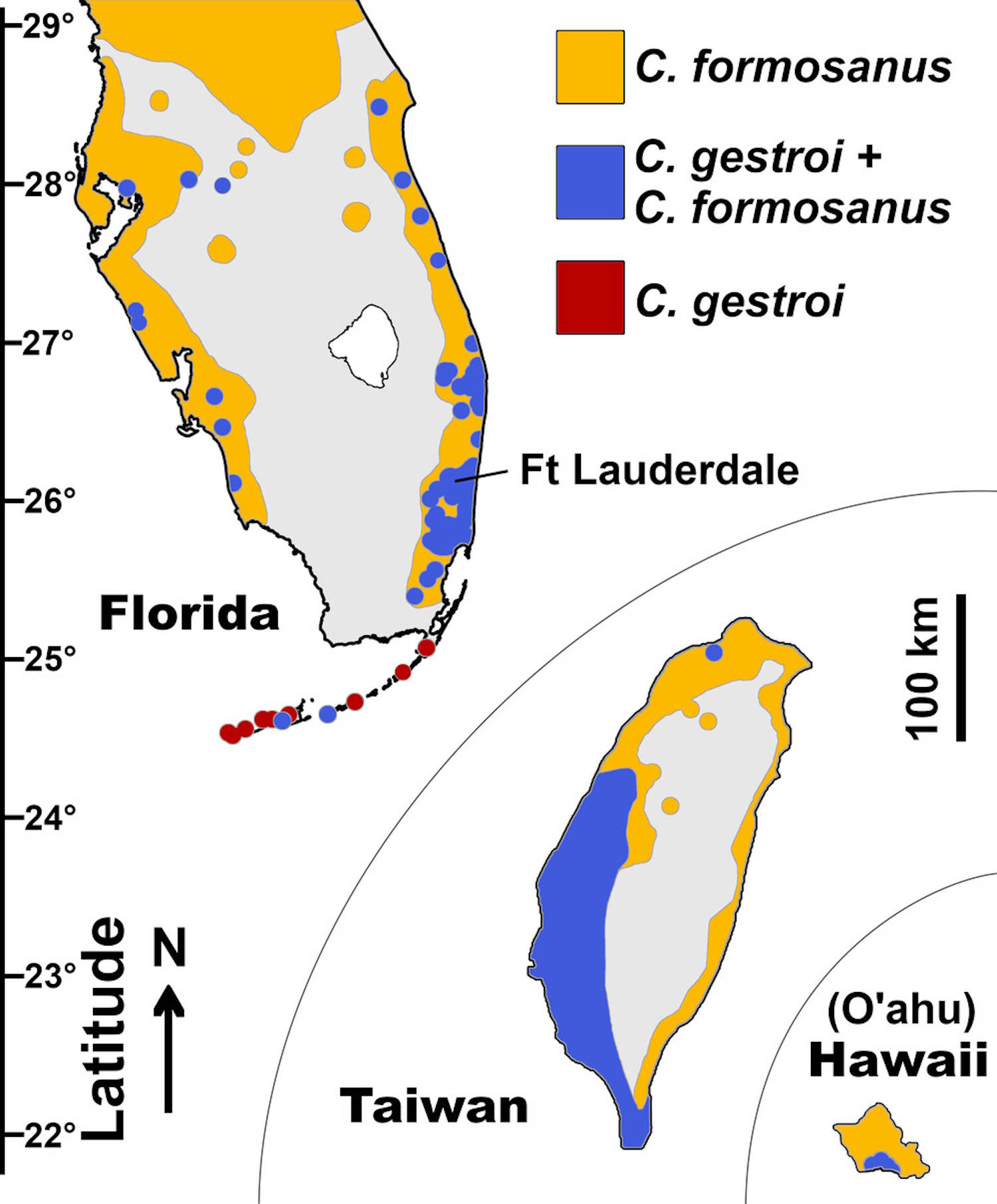Scientists confirm hybrid "super-termites" breeding in Florida as two destructive species interbreed, threatening to spread beyond the state via boats.

©Proceedings of the Royal Society B
Table of contents
Two of the world’s most destructive termite species are spreading across the United States, but that’s not all—they’re now interbreeding to create a hybrid “super-termite” that poses a serious threat to environments and ecosystems. This alarming confirmation comes from a comprehensive study conducted by researchers at the University of Florida’s Institute of Food and Agricultural Sciences.
Scientists have unfortunately confirmed that hybrid termite colonies have established themselves in South Florida: invasive Formosan termites and Asian subterranean termites are not only coexisting in urban environments, but they’re also reproducing with each other.
The first suspicious observations
“About 10 years ago, we first observed males and females from both species interacting through interspecies courtship behaviors during spring termite flights,” explains Thomas Chouvenc, the study’s lead author. “The observation was unexpected and raised alarm bells about the possibility of hybrid populations forming in the field.”
Scientists emphasize that both termite species form massive colonies that, once mature, can send winged termites in search of mates to establish nests with new queens and kings.
Over the past decade, researchers had been monitoring termite activity in neighborhoods where the two species overlap. While initial laboratory studies demonstrated that hybrid colonies could form, it remained unclear whether they could thrive or produce fertile offspring.
“Unfortunately, termite colonies are very mysterious, and searching for hybrid ones in the field is like looking for a needle in a haystack. We have carefully monitored termite activity for over a decade to verify the presence of hybrid colonies in some of the neighborhoods affected by both termite species,” Chouvenc noted.
Initially, there was reasonable optimism, as laboratory colonies initially appeared to be sterile. However, in 2021, researchers began collecting winged termites in Fort Lauderdale that didn’t match the form of either species and decided to intensify field monitoring.
“At first I couldn’t believe it, because I was hoping never to find them. Since then, we have confirmed the presence of hybrid swarms every year since 2021, including April 2025,” Chouvenc said.
Over the past four years, researchers have collected hybrid winged termites during swarms, but had been unable to determine the precise location of the colonies from which the different species originated.
The situation changed in October 2024, during a routine inspection of a Fort Lauderdale city park, where the team discovered a tree infested with a colony that showed typical traits of the hybrid soldier termites they had previously studied in the laboratory.

©Proceedings of the Royal Society B
Genetic testing confirms fears
Unfortunately, DNA analyses confirmed that these samples were hybrid termites—individuals that had half their genes from each of the two species.
“Thanks to a decade of laboratory work, we knew what the hybrid termite looked like and were able to identify it immediately when we discovered it in the field. Due to its mysterious biology, it most likely established itself there for more than five years before we could even detect it, and there are very likely many other hundreds that have already established themselves throughout urban South Florida,” the researchers explained.

©Proceedings of the Royal Society B
Why the hybrid termite is terrifying
With the presence of hybrid colonies now confirmed, scientists warn that the consequences could extend well beyond Florida. Fort Lauderdale, nicknamed the “Yachting Capital of the World,” is a known hotspot for the introduction and spread of invasive termites via recreational boats. Previous research by the team had demonstrated how private boats represent one of the main pathways for international spread of these species.
“It could be an issue that only concerns Florida, but it probably won’t stay there. Give it time,” the researchers cautioned.
This latest study also highlights how this phenomenon is not exclusive to the United States. In collaboration with researchers from Taiwan, where both termite species have long been established, similar hybridization events have recently been confirmed, suggesting that crossbreeding might be inevitable wherever the two species coexist.
“Seeing two of the world’s most destructive termite species hybridizing here in Florida is a real concern, and it’s unknown whether it will turn into a serious long-term economic problem that would add to the one already caused by both species,” the scientists warned.
Since the hybridization process has likely been ongoing for a decade, it cannot be stopped. However, understanding the biology of this hybrid termite, its strengths and weaknesses, could help improve termite pest management solutions in the future.
